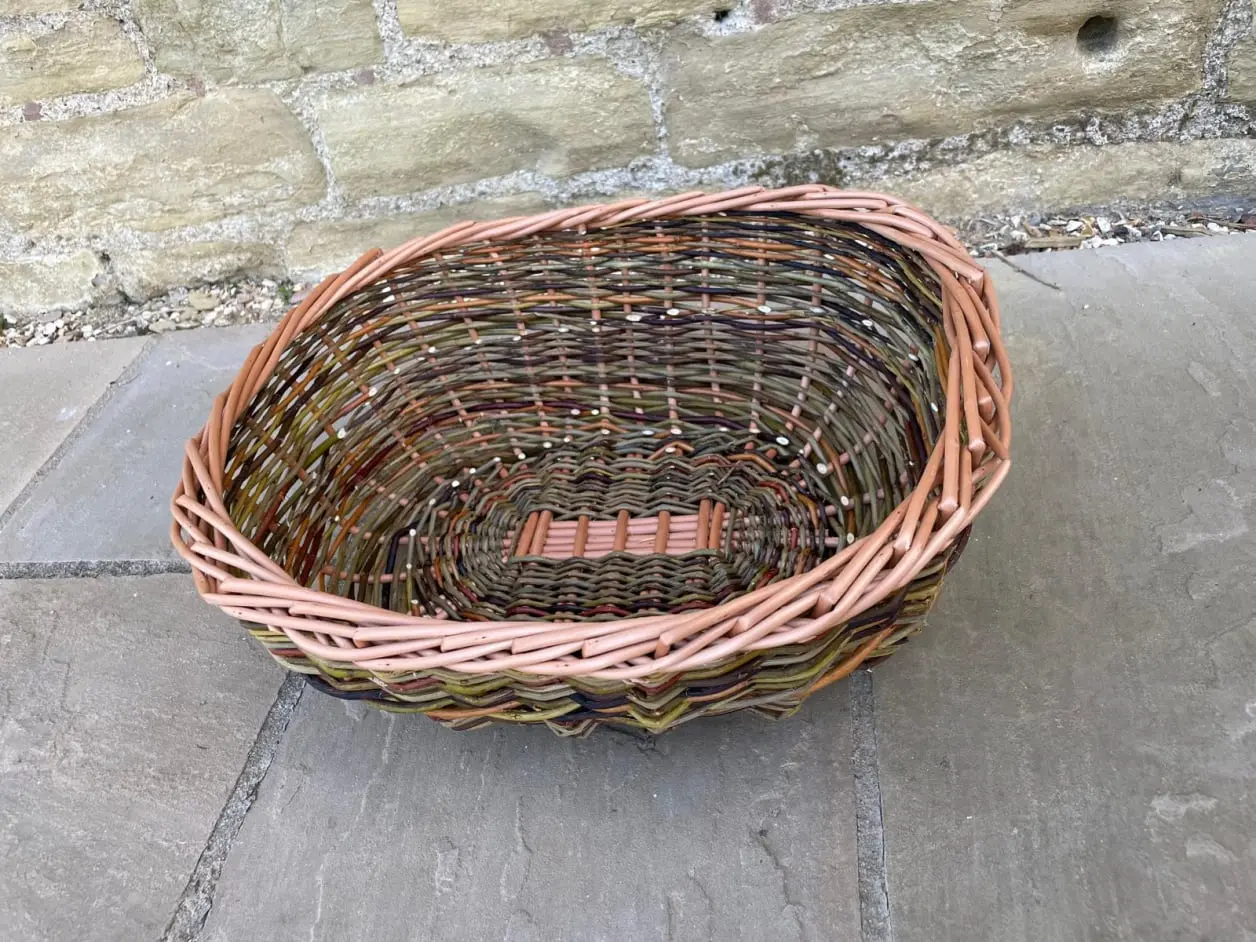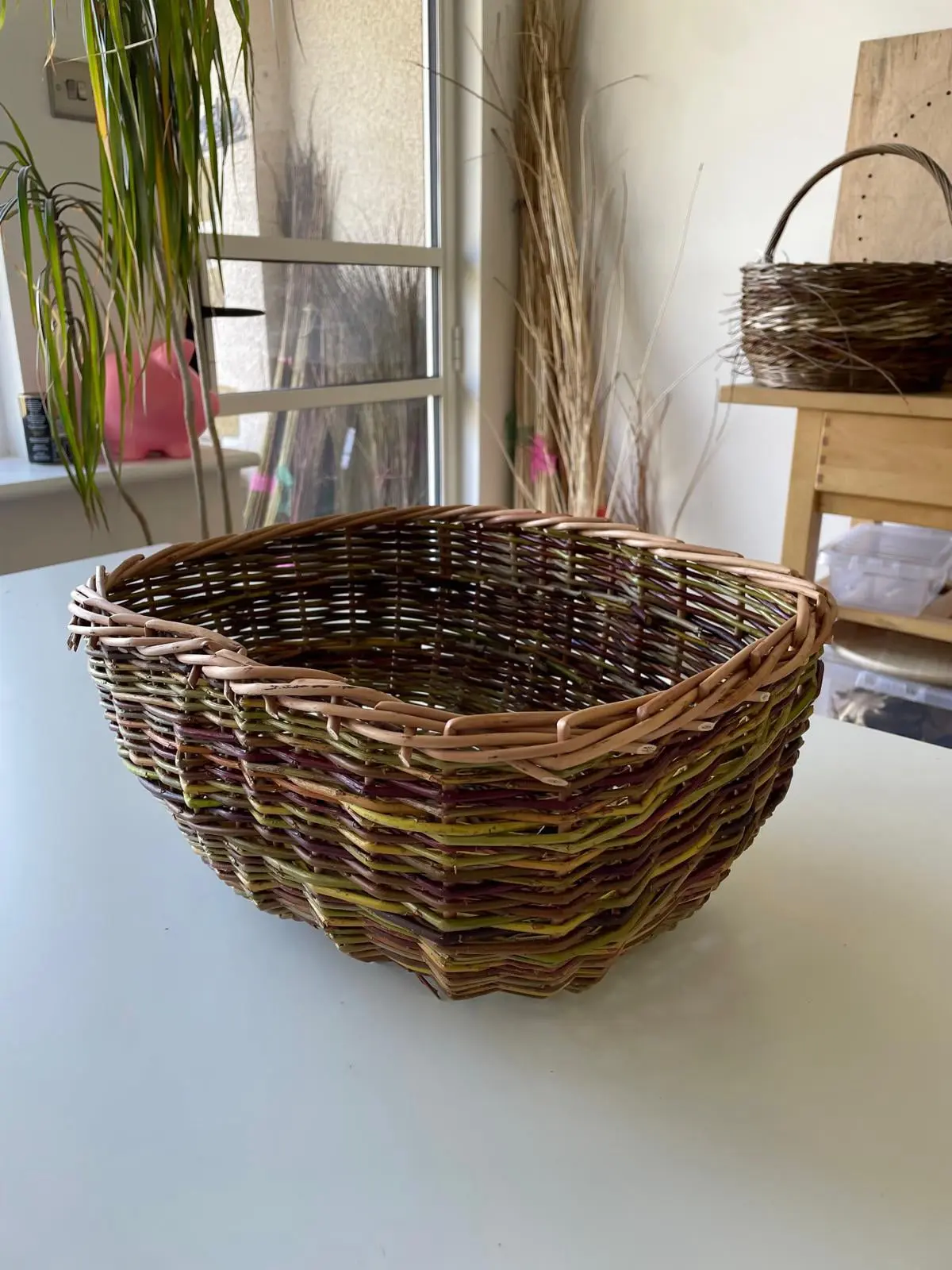
Second attempt was too wide and too squat, although the weave was tighter at the bottom.

Attempt one had a better shape but a looser weave.

Second attempt was too wide and too squat, although the weave was tighter at the bottom.

Attempt one had a better shape but a looser weave.
Wednesday the following week, I’d got all my new material prepped and sorted, had a whole school day to do it and got cracking.
Sadly, it was worse than the first one, so I ended up putting the handle on the first one anyway. I may try and put side handles on the second one if I have time. But back to the handle…
I needed to finish the handle before the husband went away working for the week, leaving little opportunity to weave. I had one Sunday morning. It just unravelled.
Despite soaking some willow handle sticks with the best of intentions, I forgot to put them back in the bath after I’d washed the child. As a result, they just kinked and snapped and nearly made me weep a little.
Not to be deterred, I had a restorative cup of coffee and went raiding in the garden. Cursing the husband slightly for having done a thorough job of spring pruning every single tree and bush, I finally spotted something up a sweet chestnut tree that might be suitable.
Praise to be whomever the god or goddess is of basketmaking, the sweet chestnut played ball and helpfully shaped up into a nice handle.
However, when I uncovered the buff willow that had been left to chill in dampish towels, I had over watered it, so it had gone slimy and, as it turned out, quite prone to splitting and looking like it had been cranked.
By this point I didn’t have the will, nor the required gumption, to start imitating the square shaped handle on the original.
No, I am not ashamed to say that I thought, sod it, and made a curved handle using the same techniques.
Given the Unit is called Make a basket with handles using traditional techniques, I felt that any handle was advantageous over no handle due to material – or my spirit – breaking.
Doing a curved version of the original was in itself enough for me to invent some new expletives.
I couldn’t find willow that was still flexible enough to weave in the sides (made the body of the basket on Wednesday and finished handle on Sunday but everything had dried out or gone slimy – it wasn’t a good Sunday). Splitting the buff to make the wrap used about three times the amount that actually went on the handle.
But! It is done. I have a basket to hand in. I’ve learnt a lot from it and had to really dig deep to keep going and finish it because the handle nearly drove me over the edge.
Although it’s not really of a standard I was hoping it would be, I am pleased that it does at least resemble the original in shape and style and I do like the colours.